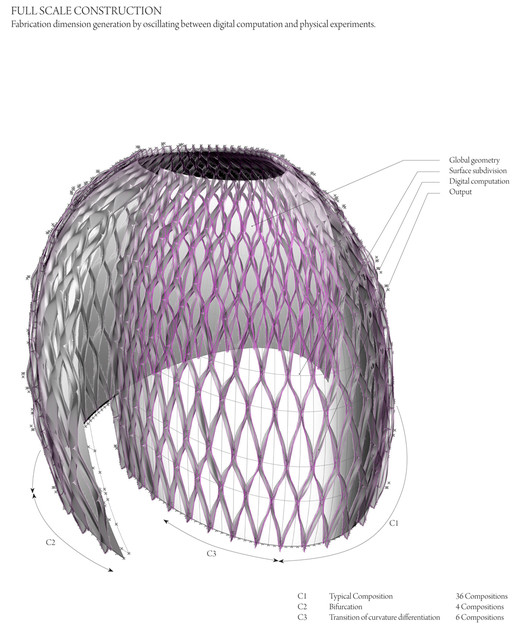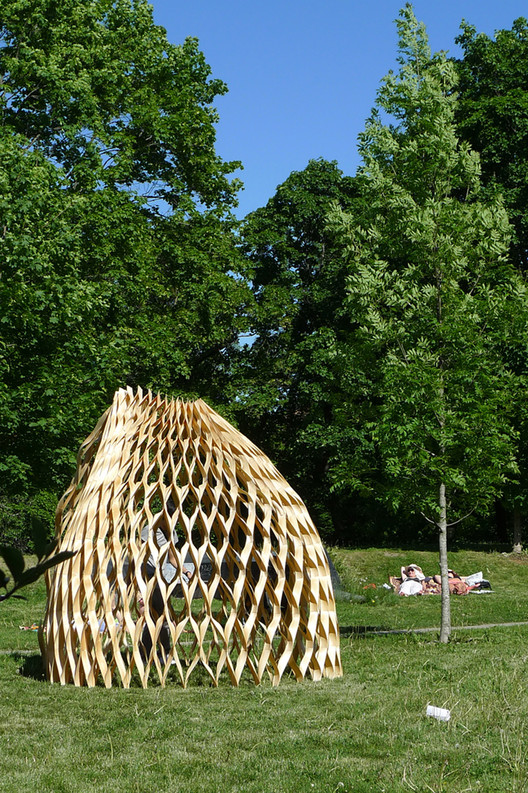
Wing Yi Hui and Lap Ming Wong, two students from Hong Kong studying at The Oslo School of Architecture and Design, have shared their wooden pavilion with us. The performance-oriented design studio, under the guidance of Professors Michael U. Hensel, Defne Sunguroğlu Hensel and Dr. Birger R. Sevaldson, gave the students the opportunity to explore the performance of the wood and create a “customization possibility” within the constraints of a “platform of standardization.” The designers explained, “By understanding the performance of material, and allowing it to perform its intrinsic properties, innovative and sustainable methodology of architectural production could be emerged as a natural response. Deformation of wood due to moisture is no longer a nuisance but a benefit to fabrication.”
Check out their process work and even more about their project after the break.






























